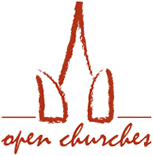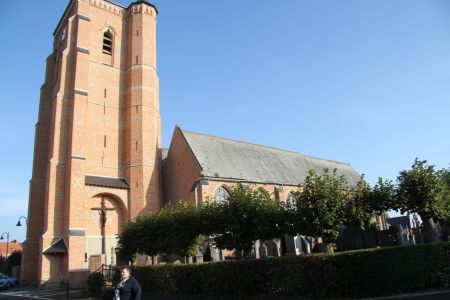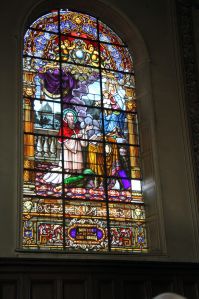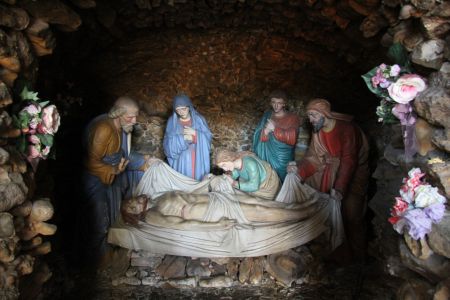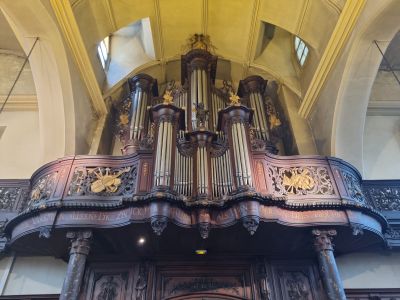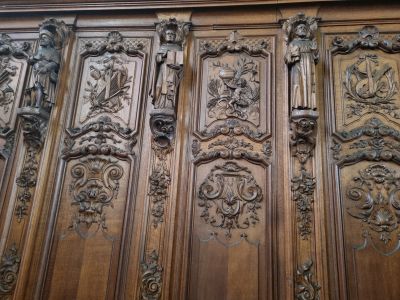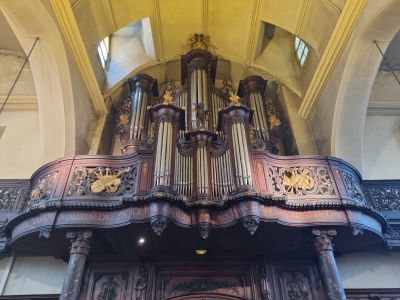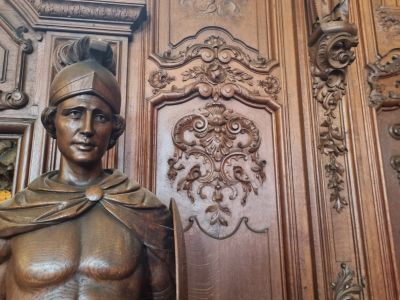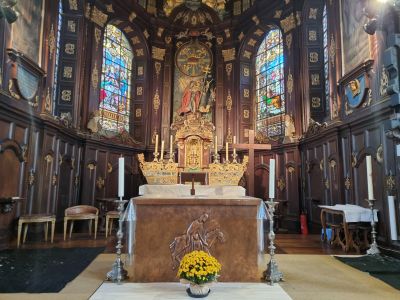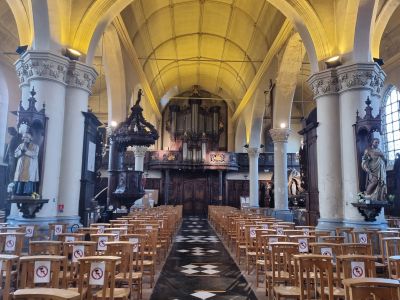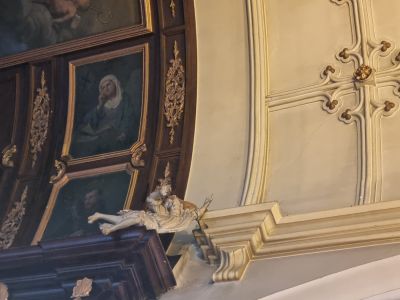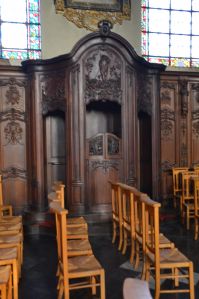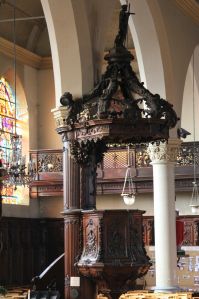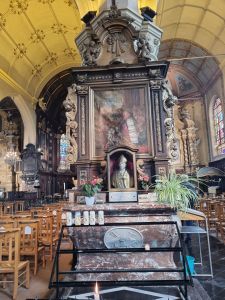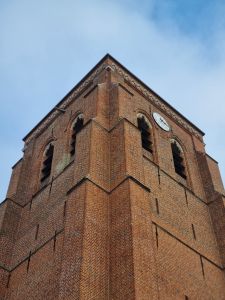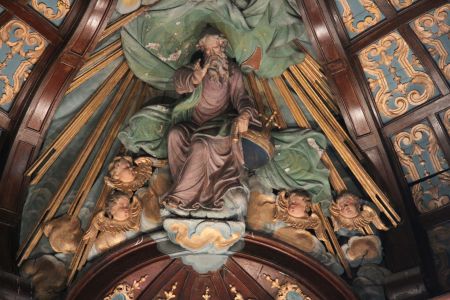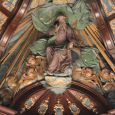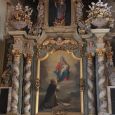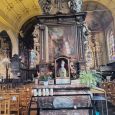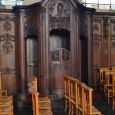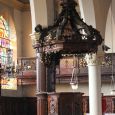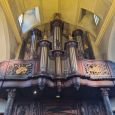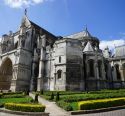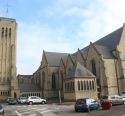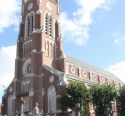Church | XVI-XVIIe siècle | Gothic | Catholic Church




Map
Opening hours
Thank you for your understanding.
Religious offices
Description
Situated on the site of an ancient stone church dating from the 12th century, itself the successor to a primitive wooden church probably dating from the 9th century, the present-day church is striking for its sober exterior architecture contrasting with the richness of its interior decoration.
During the Revolt of the Beggars (1565-1569), a movement led by nobles opposed to the policies of the sovereign of the Spanish Netherlands (Philip II of Spain) against the spread of Protestantism, the church in Arnèke, like many other churches in the area, was twice pillaged and burnt down, undermining the Catholic image.
It was rebuilt at the end of the sixteenth century and during the first half of the seventeenth century on the plan of a three-aisled hallekerke (hall church), one of the first aisles of which was erected as early as 1595.
Entering through the tower-porch, visitors are amazed by the splendour of the church's decor and possessions, displayed under panelled vaults redecorated in the 19th century and framed by impressive wood panelling depicting fifty-two saints (of whom only 9 are saints!).
A number of items come from the former Saint-Winoc de Bergues abbey, to which the Arnèke hospice belonged, such as the two life-size Roman and Jewish soldiers that frame the entrance to the grotto containing the monumental Entombment.
Visitors to the church should take the time to admire every detail, including the altarpieces below, the confessionals, the pulpit and the organ. But don't forget to take a look at the Stations of the Cross, written in Flemish!
Dedicated to Saint Martin, the church is still highly venerated for its relics of Saint Gohard. Originally from Bavaria, Gohard became a pilgrim-monk in Europe after refusing the position of Father-Abbot at Altach Abbey, before entering the service of the Bishop of Thérouanne, who sent him to Arnèke. He stayed there for 3 years to evangelise the region before returning to Altach where he became father-abbot before being appointed bishop of Hildesheim.
Translated with www.DeepL.com/Translator (free version)
Photos
Media
Remarkable elements
The altarpiece of the high altar
The altarpiece on the high altar is dedicated to Saint Charles Borromeo. It is set into the panelling of the sanctuary.
This painted and gilded 18th-century panelling covers the entire choir, perfectly integrating the stained glass windows and paintings.
The altarpiece in the centre depicts Saint Charles Borromeo in front of the cross.
The ceiling depicts the apotheosis of Saint Martin, patron saint of the parish.
The altar is in gilded wood with mirrors. The revolving exhibition of 1772 has three compartments.
Translated with www.DeepL.com/Translator (free version)
The side altarpieces
The two side altarpieces were made in 1715 by Jacques Wailsch, an artist from Saint-Omer. They consist of a central body framed by two twisted columns surrounded by pampers and ending in volutes. They are topped by a large pediment housing a statue.
The north altarpiece is dedicated to the Virgin Mary. The painting depicting Saint Dominic receiving the Rosary from the hands of the Virgin is by Bafcop, a painter from Cassel. It dates from the late 19th century. The niche contains an 18th-century statue of the Virgin and Child.
The south altarpiece is dedicated to Saint Nicholas. The central painting depicts the apparition of the Sacred Heart to Saint Marguerite Alacoque. It is also by Bafcop. The statue in the niche is of Saint Nicholas.
Translated with www.DeepL.com/Translator (free version)
The small altarpieces
The two small altarpieces are made of red Belgian marble.
To the north: the 18th-century altar of Jesus flogged bears witness to the great devotion to the Passion throughout Flanders.
To the south: the altar of Saint Gothard dates from the 18th century. People have been coming to ‘serve’ this former parish priest of Arnèke since the 13th century to obtain cures for incurable illnesses. An annual novena is held from 1 to 9 May.
Translated with www.DeepL.com/Translator (free version)
The confessionals
The two oldest confessionals (18th century), located towards the choir, are by Spillemaker. One is carved with a representation of the Good Shepherd, and the other with a representation of Saint Peter receiving the power of the keys.
The other two confessionals are by Louis Binet from Arnèke.
Translated with www.DeepL.com/Translator (free version)
The pulpit of truth
It was made by Spillemaker in 1780. The four Evangelists and their symbols are depicted on the bowl. The sculpture of the banister is remarkable. It depicts the biblical story of Jonah.
Translated with www.DeepL.com/Translator (free version)
The organ and its case
The organ case is also by Spillmaker, dated 1771. An inscription in Flemish reads: ‘By a personal gift from Sieur VAN Kempen, I was given when he was dean-pastor of this parish.
In 1899, an organ by Neuville de Rexpoëde was installed in the case.
Translated with www.DeepL.com/Translator (free version)
Events at
Saint Martin
 13/05/2024 - 31/12/2026
13/05/2024 - 31/12/2026 Subscription for the restoration of the church
